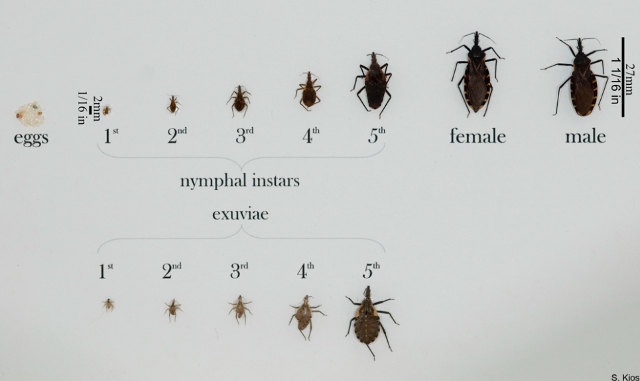-
Tips for becoming a good boxer - November 6, 2020
-
7 expert tips for making your hens night a memorable one - November 6, 2020
-
5 reasons to host your Christmas party on a cruise boat - November 6, 2020
-
What to do when you’re charged with a crime - November 6, 2020
-
Should you get one or multiple dogs? Here’s all you need to know - November 3, 2020
-
A Guide: How to Build Your Very Own Magic Mirror - February 14, 2019
-
Our Top Inspirational Baseball Stars - November 24, 2018
-
Five Tech Tools That Will Help You Turn Your Blog into a Business - November 24, 2018
-
How to Indulge on Vacation without Expanding Your Waist - November 9, 2018
-
5 Strategies for Businesses to Appeal to Today’s Increasingly Mobile-Crazed Customers - November 9, 2018
Kissing bug spreads to more than half of the United States
A deadly insect known as the “kissing bug” has recently been reported in Georgia and possibly Pennsylvania, as well as Texas.
Advertisement
The bugs may, or may not, carry the parasite that causes Chagas disease – It’s the parasite, not the bug itself responsible for spreading this potentially fatal condition. A rash of Chagas cases in dogs has been attributed to the bugs, however.
Not all kissing bugs carry the parasite, Trypanosoma cruzi.
The bug breeds mostly at night and feeds on the bloods of mammals, reptiles and birds.
How the kissing bug spreads Chagas disease is so gross that I am refraining from giving you the CDC’s description, but basically, after it bites, it leaves a waste product that, when you scratch the bite, gets in your blood stream. Infection occurs when the person rubs the feces into the bite or wound, or their mouth or eyes. “The likelihood of getting Chagas disease from a triatomine bug in the United States is low, even if the bug is infected”.
“There are a few reasons for this: The main route of infection is different than mosquito- or tick-borne illnesses”. People who think they may have been bitten by an infected bug, however, are urged to speak with their healthcare providers.
Officially called the triatomine bugs, these can live indoors and in a variety of outdoor settings like porches, wood piles and rodent nests.
Advertisement
Please do not touch or squash the bug. Rather, they suggest placing a plastic container on top of the bug, sliding the bug inside, and either filling the container with rubbing alcohol or, if not available, placing it in the freezer. Freezing will work, too. Then, you may take it to your local extension service, health department, or a university laboratory for species identification.





























